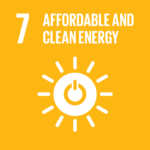Indoor air pollution is defined as the contamination of indoor air by pollutants such as carbon monoxide, particulate matter (PM 2.5), volatile organic compounds (VOCs), radon, mold, and ozone.
While outdoor air pollution has long been a focal point of environmental concern, a more insidious threat may be lurking within our own four walls. Indoor air pollution, a relatively unknown yet pervasive danger, has been silently triggering health risks for both children and adults over the years.
RELEVANT SUSTAINABLE GOALS



The Invisible Problem Of Indoor Air Pollution
The U.S. Environmental Protection Agency (EPA) ranks indoor air pollution among the top five environmental dangers, a stark reminder of its significance. With people spending approximately 90% of their time indoors, the quality of the air we breathe at home and work has become a critical health issue.
Indoor air pollution is defined as the contamination of indoor air by pollutants such as carbon monoxide, particulate matter (PM 2.5), volatile organic compounds (VOCs), radon, mold, and ozone. These pollutants can originate from various sources, including the air we breathe, indoor circulation, and even furniture.
The health impacts are alarming. Nearly four million premature deaths worldwide are attributed to indoor air pollution annually, with many more suffering from related diseases such as asthma, heart disease, and cancer. Household air pollution, caused by burning unclean fuels and using solid fuel stoves, releases dangerous pollutants like nitrogen oxides, carbon monoxides, and particulate matter.
The health risks of household air pollution are strongly correlated with poverty
This issue is deeply intertwined with inequality and poverty. Despite a healthy environment being recognized as a constitutional right, approximately three billion people in some of the world’s poorest nations still rely on unclean fuel sources.
Women and girls are disproportionately affected, often spending more time indoors and losing valuable hours gathering wood or water in households dependent on unclean fuels.
The connection between indoor air pollution and climate change is significant. Black carbon and methane emitted by inefficient household combustion are powerful climate change contributors. Household cooking and heating appliances are the highest source of black carbon, which has a warming impact 460-1,500 times stronger than carbon dioxide per unit of mass.
Addressing this issue requires a multi-faceted approach. On a global scale, organizations like the United Nations Environment Programme (UNEP) are prioritizing the adoption of cleaner energy sources and technologies. The World Health Organization (WHO) has created the Clean Household Energy Solutions Toolkit (CHEST) to aid in designing and monitoring processes concerning household energy use.
On an individual level, awareness is key. Understanding the sources of pollution in our homes, from printers and carpets to cooking appliances, is crucial. Simple steps like proper ventilation, using certified air filters, and maintaining appropriate humidity levels can significantly improve indoor air quality.
As we continue to grapple with environmental challenges on a global scale, it’s clear that the battle for clean air begins at home. By addressing indoor air pollution, we not only protect our immediate health but also contribute to the broader fight against climate change and inequality.
You may also be interested in :
Billions at Risk: Asia’s Urgent Race for Clean Energy Against Air Pollution


